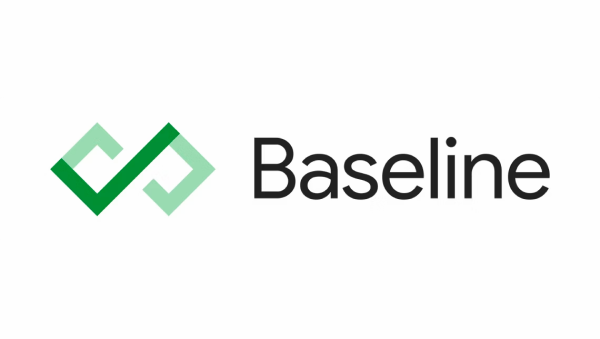Como trabalhar juntos para criar uma Web melhor
Queremos ajudar você a criar sites bonitos, acessíveis, rápidos e seguros que funcionem em vários navegadores e para todos os seus usuários. Este site é nossa central de conteúdo para ajudar você nessa jornada, escrito por membros da equipe do Chrome e especialistas externos.
Saiba como a tecnologia moderna da Web pode ajudar você a ter sucesso
Conheça casos de uso que foram facilitados por novas tecnologias da Web inovadoras.
Uma nova maneira de medir a capacidade de resposta da interação
Comece a medir e otimizar o desempenho da interação com a próxima exibição (INP, na sigla em inglês) do seu site. Em 12 de março, ele se tornou oficialmente uma das Core Web Vitals.
O que há de novo?
Introdução ao valor de referência
No Google I/O 2023, anunciamos a referência. Saiba mais sobre essa iniciativa e por que acreditamos que ela é importante.
A plataforma da Web foi novidade em janeiro.
Descubra alguns dos recursos interessantes que chegaram aos navegadores da Web estáveis e Beta em janeiro de 2024.
O podcast do CSS
Siga Una Kravets e Adam Argyle, mediadores de desenvolvedores do Google, que dividem os aspectos complexos do CSS em episódios inapropriados deste podcast.
CSS e design de IU
Aprenda agora mesmo as dicas e técnicas mais recentes para usar no seu trabalho.
Como adaptar a tipografia à preferência do usuário usando CSS
Adapte uma fonte às preferências dos seus usuários para que eles fiquem o máximo possível à vontade para ler seu conteúdo.
Novos espaços de cor e funções CSS nos principais mecanismos
Todos os principais mecanismos agora oferecem suporte aos novos espaços de cor e funções CSS. Descubra como eles podem dar vitalidade aos seus designs.
O que são os mapas de origem?
Melhoria na experiência de depuração da Web com mapas de origem.
Subgrade CSS
O Subgrid agora é interoperável entre os três principais mecanismos. Descubra como usar.
Core Web Vitals
Entenda as Core Web Vitals e outras métricas para criar sites e apps mais rápidos.
Interação com o Next Paint se torna uma Core Web Vitals em 12 de março
A interação com a próxima exibição vai se tornar oficialmente uma das Core Web Vitals e vai substituir a latência na primeira entrada em 12 de março.
Como otimizar o INP
Saiba como otimizar a métrica "Interação com a próxima exibição".
Nossas recomendações das Principais métricas da Web para 2023
Uma coleção de práticas recomendadas para otimizar a performance dos Principais métricas da Web de sites com base no estado da Web em 2023.
Use a extensão Métricas da Web para depurar os problemas das Principais métricas da Web.
A extensão Métricas da Web agora mostra mais informações de depuração para ajudar a identificar as causas dos problemas.
Progressive Web Apps
Crie experiências na Web eficientes.
Aprenda a usar o PWA
Um curso que detalha todos os aspectos do desenvolvimento moderno de Progressive Web App.
O TransformStream agora é compatível com navegadores diferentes.
Agora que os streams de transformação são compatíveis com Safari, Firefox e Chrome, finalmente eles estão prontos para o horário nobre.
Novos padrões para apps incríveis
Mergulhe em uma fantástica coleção de novos padrões para apps incríveis, incluindo padrões de área de transferência, de arquivo e avançados.
Demonstração da API Project Fugu
No site de desenvolvedores do Chrome, conheça as APIs de recursos.
Acessível para todos
Saiba como tornar seus sites mais acessíveis para pessoas com deficiência, sejam elas permanentes, temporárias ou situacionais.
Aprenda sobre acessibilidade
Nosso novo curso é um ótimo ponto de entrada e referência para temas de acessibilidade.
Como testar o contraste de cores do Web design
Uma visão geral de três ferramentas e técnicas para testar e verificar o contraste de cores acessível do seu design.
Criar a navegação principal de um site
Este tutorial descreve como criar uma navegação principal acessível em um site. Você aprenderá sobre HTML semântico, acessibilidade e como usar atributos ARIA às vezes pode ser mais prejudicial do que vantajoso.
Destaque da comunidade: Melanie Sumner
Leia nossa entrevista com Melanie, uma engenheira de software especializada em acessibilidade digital.
Pagamentos e identidade
Encontre as técnicas e práticas recomendadas mais recentes para pagamentos e ajude os usuários a fazer login com segurança nos seus sites e apps.
Criar uma chave de acesso para logins sem senha
As chaves de acesso tornam as contas de usuário mais seguras, simples e fáceis de usar.
Fazer login com uma chave de acesso
Crie uma experiência de login que use chaves de acesso e ainda acomode os usuários com senhas.
Visão geral dos pagamentos pela Web
Saiba mais sobre os Pagamentos na Web e como eles funcionam.
Práticas recomendadas para formulários de pagamento e endereço
Maximize as conversões ajudando seus usuários a preencher os formulários de pagamento e endereço da forma mais rápida e fácil possível.
Newsletter para desenvolvedores
Receba as últimas novidades, técnicas e atualizações diretamente na sua caixa de entrada.







